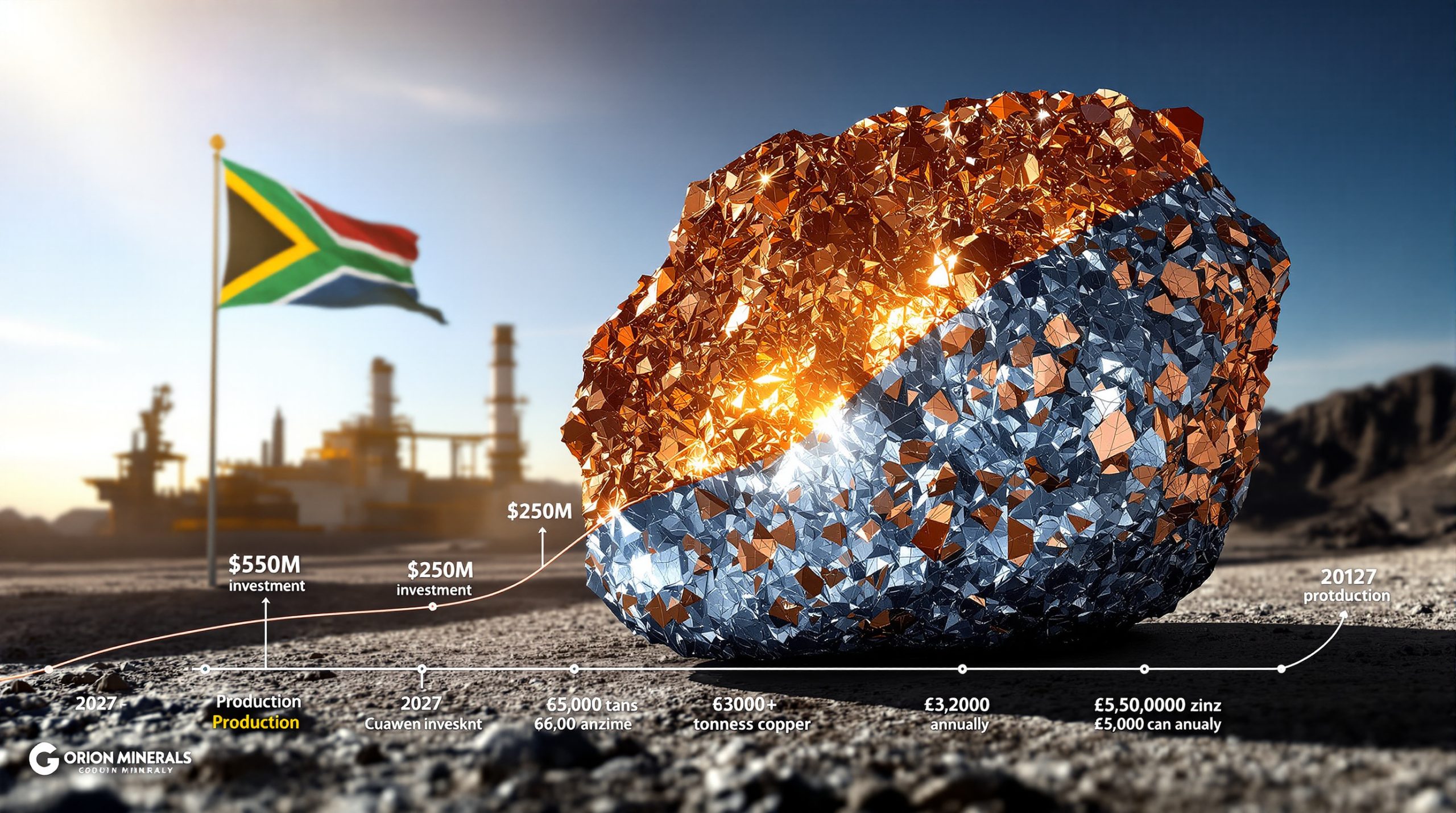Understanding Santos' Moomba CCS Project: Progress, Challenges, and Future Impact
The Moomba Carbon Capture and Storage (CCS) project, spearheaded by Santos, represents a critical juncture in Australia's energy transition strategy. Since its inception, the project has sequestered 685,000 tonnes of CO2-equivalent, positioning itself as a notable player in global CCS efforts. However, controversies surrounding its use of enhanced gas recovery and environmental concerns have sparked debates about its efficacy and alignment with climate goals. Despite these challenges, Santos reports a 30% projected production increase by 2027 through linked projects like Barossa and Pikka. This article analyzes the technical, financial, and environmental dimensions of the Moomba CCS initiative, contextualizing its role in Australia's clean energy revolution.
What is the Moomba Carbon Capture and Storage Project?
Santos' Flagship Carbon Reduction Initiative
The Moomba CCS project represents Santos' most ambitious climate initiative to date, designed to capture, compress, and permanently store carbon dioxide from its gas processing operations. Located in South Australia's Cooper Basin, the project aims to significantly reduce Santos' carbon footprint while maintaining its position as a leading energy provider in the Asia-Pacific region.
Santos positions Moomba as a vital component of Australia's journey toward net-zero emissions, highlighting how the project effectively repurposes existing infrastructure rather than requiring entirely new investments. By utilizing depleted gas reservoirs that have safely contained hydrocarbons for millions of years, Santos argues that the geological formations provide ideal conditions for secure, long-term carbon storage.
Key Technical Components of the Moomba CCS System
At its core, the Moomba CCS project employs sophisticated technology to separate, capture, and store carbon dioxide. The process begins with CO2 separation from natural gas streams during processing, followed by compression to a supercritical state where the carbon dioxide behaves both as a liquid and gas, making it easier to transport and inject.
The compressed CO2 travels through specially designed pipelines to injection wells that reach approximately 2,000 meters underground into the Patchawarra Formation. This sandstone reservoir, capped by impermeable rock layers, creates a natural seal that prevents the carbon dioxide from escaping to the surface. Santos has invested significantly in digital twin technologies to track the CO2 plume movement and verify containment integrity.
Location and Strategic Importance in Australia's Energy Landscape
The Moomba facility's location in the Cooper Basin provides strategic advantages that few other Australian sites can match. The basin has over 50 years of production history, creating a wealth of geological data that enhances confidence in storage predictions. Furthermore, the existing pipeline network and processing infrastructure significantly reduce project costs compared to greenfield developments.
From a national perspective, Moomba represents a cornerstone of Australia's technology-based approach to emissions reduction. The federal government has designated CCS as a priority low-emissions technology in its Technology Investment Roadmap, with Moomba serving as a flagship demonstration of commercially viable carbon storage in Australia's energy heartland.
How Much Carbon Has the Moomba Project Actually Sequestered?
Current Injection Achievements: 685,000 Tonnes of CO2-Equivalent
Since operations began, the Moomba CCS project has successfully injected 685,000 tonnes of CO2-equivalent, marking significant progress toward its Phase 1 capacity target of 1.7 million tonnes annually. While this represents just a fraction of Australia's total emissions, it demonstrates the technical feasibility of large-scale carbon storage in the region.
The injection rate has been steadily increasing as operational efficiencies improve, with Santos reporting 92% system reliability in recent quarters. The company projects reaching full Phase 1 capacity by late 2025, which would make Moomba one of the largest onshore CCS facilities in the Southern Hemisphere.
Measuring and Verifying Carbon Storage Results
Accurate measurement and verification remain crucial to establishing the project's environmental credentials. Santos employs a multi-layered approach to tracking stored carbon, including wellhead metering, downhole pressure monitoring, and periodic subsurface imaging to map the CO2 plume distribution.
Independent verification has been conducted through the Australian Clean Energy Regulator's carbon credit framework, though some critics argue for more transparent, real-time data access. Santos has committed to publishing quarterly monitoring results starting in 2026, but the Australia Institute and other skeptics continue to call for more immediate disclosure of baseline measurements and migration patterns.
Comparison to Other Global CCS Projects
In the global context, Moomba's achievements place it in the middle tier of operational CCS projects. Norway's Sleipner field, operational since 1996, stores approximately 1 million tonnes annually, while the Quest project in Canada captures about 1.2 million tonnes yearly. However, Moomba's storage capacity exceeds most Asian projects currently in development.
Where Moomba distinguishes itself is in cost efficiency, with Santos reporting storage costs of approximately $24 per tonne—significantly lower than the global average of $50-$100. This competitive advantage stems from the utilization of existing infrastructure and the favorable geology of the Cooper Basin reservoirs.
What Controversies Surround the Moomba CCS Project?
The Australia Institute's Criticisms and "Scam" Claims
The Australia Institute, a prominent think tank, has emerged as one of the project's most vocal critics. In a widely publicized report, the institute characterized Moomba CCS as a "carbon capture scam," alleging that the project primarily serves to extend fossil fuel production rather than meaningfully reducing emissions.
Their analysis claims that up to 78% of injected CO2 is being used for enhanced gas recovery rather than permanent storage, essentially recycling carbon to extract more hydrocarbons. According to their calculations, the additional gas production enabled by this process could generate new emissions that substantially offset the claimed carbon reductions.
Enhanced Gas Recovery vs. Pure Carbon Sequestration
At the heart of the controversy lies the distinction between enhanced gas recovery (EGR) and pure carbon sequestration. In EGR, carbon dioxide is injected into gas reservoirs partly to push additional natural gas toward production wells, increasing hydrocarbon recovery while storing some carbon.
Santos acknowledges using CO2 for enhanced recovery in certain reservoirs but maintains that this represents less than 20% of total injections. Critics contend that the economic incentives inherently favor recovery over storage, pointing to project documents that highlight production increases as a key benefit. This tension between climate goals and fossil fuel extraction remains unresolved in the project's design.
Environmental Concerns About Enhanced Oil Recovery Methods
Beyond the gas recovery controversy, environmental groups have raised concerns about potential groundwater impacts and long-term storage security. The injection of CO2 can potentially mobilize contaminants in deep formations, and pressure changes might affect aquifer systems that support agriculture in the region.
Some climate scientists have questioned whether CCS projects like Moomba might delay the necessary transition away from fossil fuels by extending the economic life of gas fields. They argue that resources directed toward CCS might yield greater emissions reductions if invested in renewable energy expansion instead.
How Does Santos Defend the Moomba CCS Project?
Company Statements on Environmental Benefits
Santos CEO Kevin Gallagher has consistently defended Moomba as an essential component of the company's climate strategy: "Whilst the current market environment is challenging, our focus remains clear: operating our base business safely and reliably, bringing our development projects online within guidance and staying focused on cost of supply."
The company emphasizes that CCS represents a pragmatic bridge technology during the energy transition, allowing Australia to maintain energy security and export competitiveness while progressively reducing emissions. Santos projects that Moomba will sequester 10 million tonnes of CO2 by 2030, equivalent to removing over 2 million cars from the road.
Technical Explanations of the Sequestration Process
Santos engineers point to multiple lines of evidence supporting storage permanence. The Patchawarra Formation has contained natural gas for millions of years, demonstrating the integrity of the overlying seal. Furthermore, injected CO2 undergoes physical and chemical trapping mechanisms over time, becoming progressively more secure through dissolution into formation waters and eventual mineralization as carbonate compounds.
The company highlights that independent geological assessments confirm a storage efficiency exceeding 99.5%, with models predicting minimal leakage risk over thousand-year timeframes. The depleted gas reservoirs selected for storage benefit from thoroughly understood pressure regimes and proven seal integrity from decades of production history.
Regulatory Compliance and Certification
Santos emphasizes that Moomba has received regulatory approval under Australia's Carbon Credits (Carbon Farming Initiative) framework, meeting stringent requirements for measurement, reporting, and verification. The project's methodology has been peer-reviewed and certified by independent experts as conforming to international standards for geological storage.
The company also points to its 25-year storage certification under the Offshore Petroleum and Greenhouse Gas Storage Act as evidence of regulatory confidence in the project's environmental integrity. This certification includes requirements for comprehensive monitoring and financial assurances that extend beyond the operational phase of the project.
What Financial Impacts Has the Moomba Project Had on Santos?
Project Investment Costs and Returns
Santos has invested approximately AU$220 million in the Moomba CCS project to date, representing a significant but manageable portion of its capital expenditure program. The company expects to recover these costs through a combination of carbon credit revenue, operational tax benefits, and enhanced hydrocarbon recovery from certain reservoirs.
The project's economics benefit from Australia's Emissions Reduction Fund, which provides incentives for verified carbon abatement. Santos projects a 12-year payback period, though this timeline depends heavily on future carbon pricing mechanisms and regulatory frameworks that remain under development.
Impact on Santos' Share Price Performance
Despite the technological achievements at Moomba, Santos' share price has struggled recently, declining 16% year-to-date and 27% year-over-year. This underperformance against broader energy indices suggests investors remain cautious about the company's strategic direction and capital allocation decisions.
Analysts note that the market has yet to fully price in potential long-term benefits from emissions reduction capabilities, instead focusing on near-term production metrics and commodity price exposure. The Moomba project's contribution to enterprise value remains difficult to quantify in traditional valuation models.
Recent Stock Trends: -16% YTD and -27% YOY Despite Recent 2.7% Gain
While Santos shares recently gained 2.7% following positive operational updates, the longer-term price trend reflects broader challenges facing the oil and gas sector. These include uncertainty around future carbon regulations, competition from renewable energy sources, and volatile commodity markets.
Institutional investors have expressed mixed views on Santos' climate strategy, with some ESG-focused funds reducing positions due to continued fossil fuel expansion while others praise the company's investments in emissions reduction technology. This investor polarization contributes to share price volatility as the market reassesses the long-term value of hydrocarbon assets.
Can Carbon Capture Technology Meaningfully Address Climate Change?
Expert Opinions on CCS Effectiveness
The scientific community remains divided on CCS's potential contribution to climate goals. Proponents, including the International Energy Agency, identify CCS as a critical technology for decarbonizing hard-to-abate sectors like cement, steel, and chemical production. They argue that complete electrification remains impractical for many industrial processes, making carbon capture an essential bridge technology.
Skeptics point to CCS's limited deployment after decades of development, noting that global capacity captures less than 0.1% of annual emissions. They question whether projects like Moomba represent genuine climate solutions or merely extend the economic viability of fossil fuel extraction while consuming resources that could accelerate renewable energy deployment.
Scale Challenges: Can CCS Keep Pace with Carbon Generation?
The scale challenge represents perhaps the most significant barrier to CCS making a meaningful climate impact. Current global capacity would need to increase by two orders of magnitude to align with net-zero pathways modeled by climate scientists, requiring unprecedented infrastructure investment and geological utilization.
Moomba's planned expansion to 5 million tonnes annually by 2028 would represent impressive growth but still amount to just 1% of Australia's total emissions. Critics examining current trends in Australia's mining sector question whether this scale-up trajectory can ever match the urgency of emissions reduction timeframes required by climate science.
The Role of CCS in Australia's Climate Strategy
Australia's government has positioned CCS as a cornerstone of its technology-led approach to emissions reduction, allocating billions in funding to accelerate deployment. Supporters argue this pragmatic approach preserves economic competitiveness while reducing emissions from existing energy infrastructure.
Environmental advocates counter that Australia's CCS focus diverts attention and resources from renewable energy expansion that could deliver faster, more substantial emissions cuts. The debate about exposing carbon credits myths reflects broader tensions in Australia's climate policy between supporting traditional energy industries and accelerating the transition to alternatives.
What Other Factors Are Affecting Santos' Business Performance?
Barossa and Pikka Projects: 30% Production Increase Expected by 2027
Beyond Moomba CCS, Santos' medium-term outlook hinges on major development projects, particularly the Barossa gas field in Australia's Northern Territory and the Pikka oil project in Alaska. These ventures are expected to boost the company's production by approximately 30% by 2027, significantly enhancing cash flow potential.
The Barossa project faced initial delays from regulatory challenges but received final approvals in early 2025. The $3.6 billion development will supply replacement gas to Darwin LNG when the Bayu-Undan field depletes, securing Santos' position in the competitive Asian LNG market for decades to come.
Legal Victories in Northern Territory Gas Projects
Santos recently secured important legal victories supporting its Northern Territory operations. A Federal Court ruling dismissed challenges from Tiwi Island traditional owners regarding the Barossa gas pipeline, finding the consultation process adequately addressed cultural heritage concerns.
This favorable outcome follows earlier legal successes in the "Crocodile Man" case, which established important precedents regarding indigenous consultation requirements for resource projects. These rulings provide greater certainty for Santos' development timeline and reduce potential delay-related costs.
Impact of Global Tariffs on Energy Companies
The recent implementation of a 15% tariff on LNG exports has created headwinds for Santos and other Australian energy producers. Initially causing a 4% share price drop when announced, the tariff could potentially reduce the company's annual earnings by hundreds of millions of dollars if fully implemented.
In response, Santos has accelerated efforts to diversify its customer base beyond traditional markets, engaging with potential buyers in South Korea, India, and Southeast Asia. The company has also joined industry efforts addressing ESG challenges in mining through World Trade Organization mechanisms, though resolution remains uncertain.
What's Next for Santos and the Moomba CCS Project?
Expansion Plans and Future Capacity
Santos has outlined ambitious expansion plans for Moomba CCS, aiming to increase storage capacity to 5 million tonnes annually by 2028. This Phase 2 development would involve drilling additional injection wells and extending pipeline connections to capture emissions from industrial facilities beyond Santos' own operations.
The company has initiated discussions with major industrial emitters in eastern Australia about potential carbon management partnerships. These include steel manufacturers, cement producers, and power generators seeking cost-effective solutions for hard-to-abate emissions as carbon regulations tighten.
Integration with Other Santos Energy Projects
Moomba increasingly features in Santos' broader energy transition strategy, particularly through integration with hydrogen initiatives. The proposed Darwin–Moomba Hydrogen Hub would combine green hydrogen production from renewable sources with blue hydrogen derived from natural gas with carbon capture.
This hybrid approach leverages existing gas infrastructure while progressively incorporating renewable capacity, potentially positioning Santos as a major player in the emerging hydrogen economy. The company has secured preliminary offtake agreements with Japanese utilities interested in low-carbon hydrogen imports.
Regulatory and Environmental Hurdles Ahead
Despite recent progress, Moomba faces ongoing regulatory challenges that could affect its expansion timeline. The pending Carbon Storage Liability Bill, if passed, would impose significant financial assurances for post-closure monitoring and potential remediation, potentially altering project economics.
Environmental groups have signaled intentions to challenge aspects of the expansion under revised climate provisions of Australia's environmental protection laws. These legal contests will test the boundaries of emerging regulatory frameworks around carbon storage and likely influence the development pathway for similar projects nationwide.
FAQ: Santos Moomba CCS Project
Is the Moomba CCS project actually reducing carbon emissions?
The emissions impact remains contested. Santos reports sequestration of 685,000 tonnes to date, but critics argue that associated enhanced gas recovery may generate new emissions that partially offset these reductions. Independent lifecycle analyses suggest the net climate benefit depends heavily on assumptions about leakage rates and downstream gas consumption.
How does enhanced gas recovery differ from pure carbon sequestration?
Enhanced gas recovery uses CO2 injection primarily to increase hydrocarbon production, with carbon storage as a secondary benefit. Pure sequestration prioritizes permanent CO2 storage without production enhancement. The distinction matters because recovery-focused operations may optimize for gas production rather than maximizing carbon retention.
What is the expected lifespan of the Moomba CCS facility?
Santos has committed to a 25-year operational phase with active CO2 injection, followed by a post-closure
Want to Invest in the Next Major Mineral Discovery?
Discovery Alert's proprietary Discovery IQ model delivers real-time alerts on significant ASX mineral discoveries, instantly turning complex data into actionable investment opportunities. Explore why historic discoveries can generate substantial returns by visiting the dedicated discoveries page and begin your 30-day free trial today.




